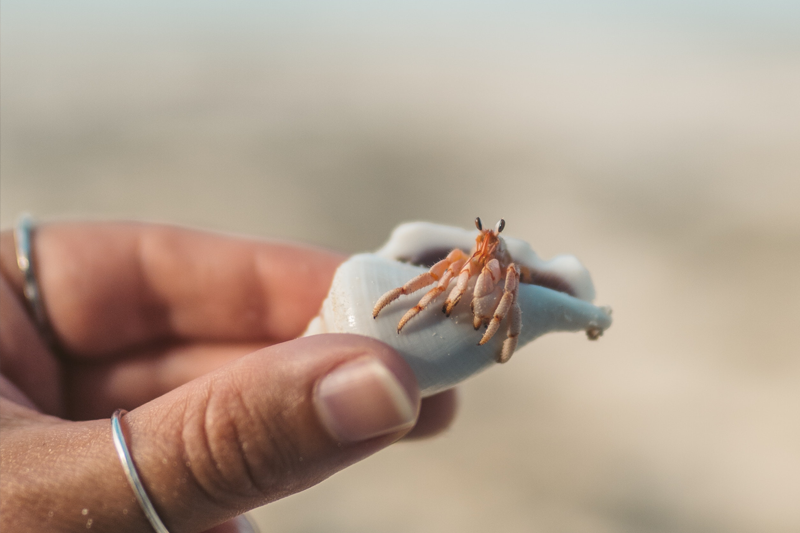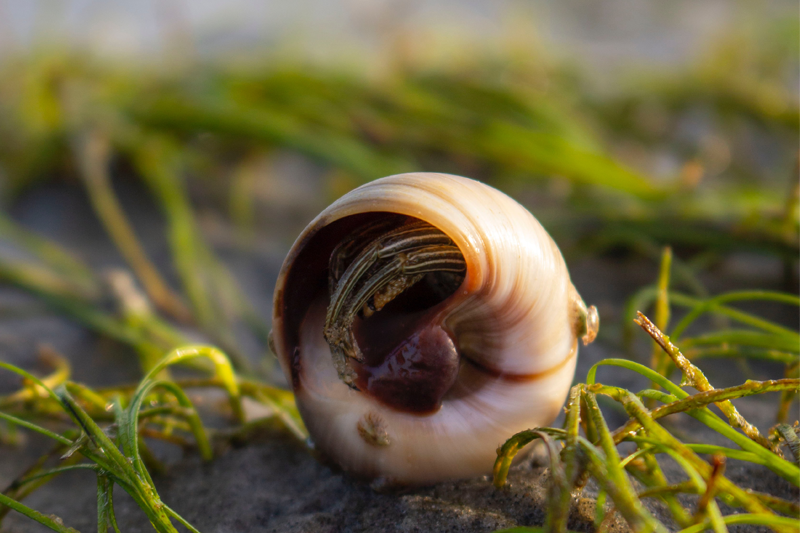Brief overview of Breeding and Reproduction for hermit crabs
Female hermit crabs release pheromones to attract males, and mating often involves a complex courtship ritual. Once fertilized, the female carries the eggs on her abdomen until they hatch into larvae. The larvae then spend several weeks in the ocean before settling on the ocean floor and developing into juvenile hermit crabs.
Hermit crabs grow by molting their exoskeleton, and breeding can be stressful for them. Therefore, it is important to provide them with appropriate conditions, such as a suitable habitat and diet, to ensure their well-being during the breeding process.
The Hermit Crab Life Cycle
The life cycle of a hermit crab goes through several stages:
- Egg Stage: Female hermit crabs lay eggs that are fertilized by males through internal fertilization. The eggs are usually carried by the female on her abdomen until they hatch.
- Larval Stage: When the eggs hatch, they release tiny larvae that drift in the ocean currents for several weeks. During this stage, the larvae feed on plankton and undergo several molts.
- Settlement Stage: After several weeks of drifting, the larvae settle on the ocean floor and attach themselves to a small shell or piece of debris. At this point, they begin to develop into juvenile hermit crabs.
- Juvenile Stage: Juvenile hermit crabs have soft exoskeletons and are vulnerable to predators. They find an empty snail shell and use it as a protective home. They continue to molt their exoskeletons several times as they grow and develop.
- Adult Stage: As hermit crabs grow and mature, they continue to seek larger shells to inhabit. They reproduce and continue the life cycle by laying eggs and starting the process all over again.
It is important to note that hermit crabs can live for several years, and their life cycle can be influenced by factors such as habitat conditions, food availability, and environmental factors.
The Ideal Hermit Crab Breeding Age
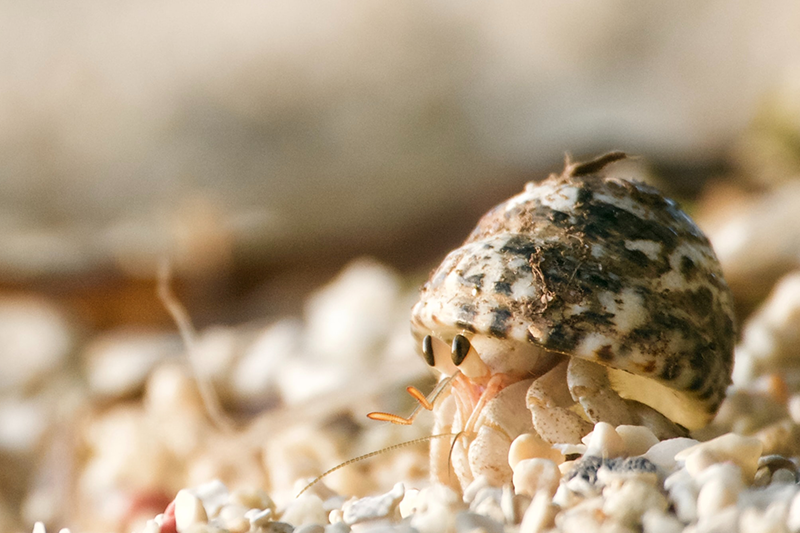
The ideal breeding age for hermit crabs varies depending on the species, but in general, hermit crabs reach sexual maturity between the ages of one and two years old. However, it is important to note that breeding can be stressful for hermit crabs, and breeding too early or too frequently can have negative effects on their health and well-being.
It is recommended that hermit crabs be at least two years old before attempting to breed them. This allows them to reach a size and maturity level that can handle the stresses of breeding and producing offspring. Additionally, it is important to provide appropriate conditions for breeding, such as a suitable habitat and diet, to ensure the health and well-being of the hermit crabs and their offspring.
It is also important to note that breeding hermit crabs in captivity requires careful consideration and preparation. Breeding hermit crabs can be challenging, and it is important to have a good understanding of their natural behaviors and needs before attempting to breed them. Seeking guidance from an experienced hermit crab breeder or veterinarian can be helpful in ensuring a successful breeding experience.
How do I Identify Female Hermit Crabs?
Identifying the sex of a hermit crab can be challenging, especially in small or juvenile hermit crabs. However, there are some general characteristics that can help identify a female hermit crab:
- Abdominal shape: Female hermit crabs typically have a rounder, wider abdomen than male hermit crabs. This is because female hermit crabs carry their eggs on their abdomen.
- Claw size: Female hermit crabs generally have smaller claws than male hermit crabs, although this can vary depending on the species.
- Reproductive pores: Female hermit crabs have small openings, called reproductive pores, located near the base of their fifth pair of legs. These pores are used for egg-laying and are not present in male hermit crabs.
- Behavior: Female hermit crabs may exhibit behaviors related to egg-laying, such as digging in the substrate or carrying small objects with their fifth pair of legs.
It is important to note that not all hermit crabs will display clear gender characteristics, and in some cases, it may be difficult to determine their sex. Additionally, some species of hermit crabs have males and females that are similar in appearance. If you are unsure about the sex of your hermit crab, it may be helpful to consult with an experienced hermit crab breeder or veterinarian for guidance.
How Often Do Hermit Crabs Breed?
The frequency of breeding in hermit crabs depends on several factors, such as age, health, and environmental conditions. In the wild, hermit crabs typically breed once a year during the warmer months of the year, when food and environmental conditions are optimal.
In captivity, breeding can occur more frequently, but it is not recommended to breed hermit crabs too often, as it can be stressful for them and have negative effects on their health and well-being. It is recommended to allow at least a year or two between breeding attempts to allow the hermit crab to fully recover and prepare for another breeding cycle.
It is important to note that breeding hermit crabs requires careful consideration and preparation, and it should only be attempted by experienced hermit crab breeders or veterinarians who have a good understanding of their natural behaviors and needs. Proper care, nutrition, and environmental conditions are important to ensure successful breeding and healthy offspring.
How Do You Breed Hermit Crabs in Captivity?

Breeding hermit crabs in captivity requires careful preparation and attention to the needs of the hermit crabs. Here are some general steps to follow:
- Choose healthy, sexually mature hermit crabs: It is important to choose healthy, sexually mature hermit crabs for breeding. They should be at least two years old and have a good body condition.
- Provide appropriate habitat conditions: Hermit crabs need a suitable habitat to breed. This includes a substrate for molting, such as coconut fiber or sand, adequate humidity, and a variety of shell sizes for the hermit crabs to choose from.
- Provide a balanced diet: Hermit crabs need a balanced diet that includes a variety of foods, such as fresh fruits and vegetables, high-quality commercial crab food, and calcium supplements.
- Monitor behavior and health: It is important to monitor the behavior and health of the hermit crabs closely during the breeding process. Signs of stress or illness should be addressed immediately.
- Observe courtship and mating behavior: Hermit crabs have a complex courtship ritual that involves pheromone release and physical interactions. Mating often occurs at night.
- Care for eggs and larvae: Once fertilized, the female hermit crab carries the eggs on her abdomen until they hatch. The larvae then spend several weeks in the ocean before settling on the ocean floor and developing into juvenile hermit crabs.
Overall, breeding hermit crabs in captivity requires careful planning, preparation, and monitoring to ensure the health and well-being of the hermit crabs and their offspring. It is recommended that only experienced hermit crab breeders or veterinarians attempt to breed hermit crabs in captivity.
